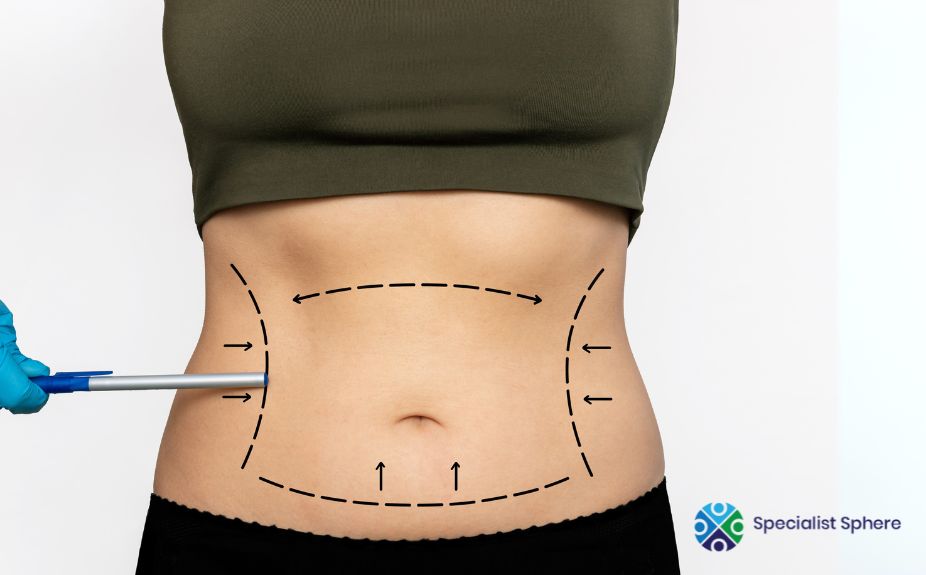Body contouring is a popular solution for people who are at or near their ideal weight but struggle with localized concerns like stubborn fat, loose skin, or reduced muscle tone. While diet and exercise are foundational for a healthy body, they sometimes don’t address specific aesthetic goals. Non-surgical body contouring offers a way to refine your shape, targeting areas that are resistant to traditional methods.
Who Is a Good Candidate for Body Contouring?
Body contouring is not a weight-loss solution. Instead, it’s designed to enhance your natural shape. The ideal candidate is someone with a stable weight who wants to address one or more of the following:
- Stubborn fat pockets: Areas like the abdomen, hips, thighs, or upper arms that don’t respond to exercise.
- Mild to moderate skin laxity: Sagging or loose skin on the arms, legs, or jawline.
- Reduced muscle tone: A desire for more definition in areas like the abs or buttocks.
- Cellulite or skin irregularities: Improving the appearance of dimpled skin.
Understanding Your Non-Surgical Body Contouring Options
Body contouring procedures can be categorized into three main types, each targeting a specific concern.
Fat Reduction: How Do Non-Surgical Treatments Get Rid of Stubborn Fat?
Non-surgical fat reduction treatments work by using advanced technologies to destroy fat cells beneath the skin. Once the fat cells are damaged, your body naturally processes and eliminates them over time.
- Common technologies include:
- Cryolipolysis (Fat Freezing): Uses controlled cooling to crystallize and destroy fat cells.
- Radiofrequency (RF) Heating: Uses thermal energy to heat and break down fat cells.
- Laser Lipolysis: Uses targeted laser energy to liquefy fat cells.
These treatments are often used to target the abdomen, thighs, flanks (love handles), upper arms, and even the area under the chin.
What Can I Expect During and After Fat Reduction Treatment?
Before your session, you’ll be advised to stay hydrated. During the procedure, a device is applied to the treatment area, and you may feel sensations like coldness, suction, or pressure. Sessions are typically quick, lasting 35-60 minutes, and you can resume your daily activities immediately afterward. Results appear gradually over several weeks as your body flushes out the damaged fat cells.
Skin Tightening: What Is the Best Non-Surgical Way to Firm Up Loose Skin?
Non-surgical skin tightening procedures stimulate your body’s natural ability to produce collagen and elastin—the proteins responsible for skin firmness and elasticity.
- How it works: Technologies like radiofrequency or light-based energy are used to deliver thermal energy to the deeper layers of your skin. This heat prompts your skin to tighten and remodel itself, leading to a smoother, firmer appearance.
Skin firming treatments are ideal for addressing mild to moderate skin laxity on the arms, legs, abdomen, and along the jawline.
What Happens During a Skin Firming Session?
The treatment area should be clean and free of products. As the device is applied, you may feel a warm sensation. Sessions are typically short (30-45 minutes), comfortable, and require no downtime. Improvements in skin texture and firmness will become noticeable over time as new collagen is produced.
Muscle Toning: Can You Build Muscle Without Exercise?
While not a replacement for exercise, muscle conditioning treatments use high-intensity electromagnetic stimulation to create thousands of involuntary muscle contractions. These contractions are far more intense than what you can achieve through a regular workout.
- How it works: This technology forces muscles to contract, leading to enhanced muscle tone and definition. It’s most effective on the abdomen, buttocks, and thighs.
What Does Muscle Conditioning Feel Like?
During the session, you’ll feel a series of strong, rhythmic contractions in the targeted area. The sensation is unique but generally well-tolerated. Each session lasts about 30 minutes, and there’s no recovery period. Over a series of treatments, you’ll notice improved muscle tone and definition.
How to Choose the Right Body Contouring Treatment for You
- What is my main goal? Do you want to reduce fat, tighten skin, build muscle, or a combination?
- Which area do I want to treat? Some technologies are better suited for certain body parts.
- What are my expectations? Fat reduction results can be long-lasting, while skin tightening and muscle toning may require maintenance sessions to sustain results.
- What is the cost? The total cost depends on the number of sessions and the size of the treatment area.
For a comprehensive approach, many patients opt for a combination of treatments to achieve their desired sculpted look. A personalized plan can be created to address multiple concerns at once.
Conclusion: Is Body Contouring Right for You?
Non-surgical body contouring is an effective way to address localized aesthetic concerns and refine your shape. It is a safe and convenient alternative to surgical procedures, with little to no downtime. By targeting specific fat deposits, skin laxity, or muscle tone, these treatments can help you achieve a more contoured and confident silhouette.
Ready to start your journey?
Schedule a consultation today to discover which body contouring treatment is the best fit for your goals.


